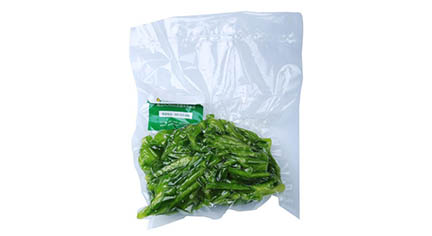Vacuum sealing is a practical technique that extends the shelf life of products, protects them from damage, and saves storage space. Whether you're preserving food, protecting electronics, or organizing household items, mastering the process ensures optimal results. This guide outlines what vacuum sealing is, how to do it, its applications, and the benefits of automated equipment.

Vacuum sealing involves removing air from a packaging pouch and creating an airtight seal to protect contents from oxygen, moisture, and contaminants. The process works by:
Step 1: Prepare Your Materials and Equipment
Choose the Right Bag: Select food - grade bags for edibles, heavy - duty bags for sharp objects, or roll bags for custom sizes. Ensure bags are clean, undamaged, and appropriately sized (leave 2–4 inches of space above the item for sealing).
Gather Equipment: Use a manual handheld sealer for small batches, a countertop vacuum sealer for home use, or industrial machines for commercial needs. Check that the device is plugged in, the sealing strip is clean, and the pump is functioning.
Prep the Item: For food, dry it thoroughly and let hot items cool to avoid condensation. For non - food items, remove sharp edges and ensure they’re dry and clean.
Step 2: Load the Item into the Bag
Place the item centered in the bag, leaving the sealing area (top 2–4 inches) free of debris, liquids, or crumbs. For liquids, fill the bag no more than ⅔ full to prevent spillage during vacuuming.
Step 3: Activate the Vacuum and Seal
Insert the Bag into the Sealer: Align the open edge of the bag with the machine's sealing channel, ensuring it lies flat.
Start the Vacuum Process: Close the lid or engage the pump. Most machines automatically detect the bag and start removing air. The process takes 10–60 seconds, depending on bag size and item density.
Seal the Bag: Once vacuumed, the machine's heating element activates, melting the bag's edges together for 2–5 seconds. Let the seal cool completely (10–15 seconds) before handling.
Step 4: Check the Seal
Visually inspect the seal for uniformity—no gaps, wrinkles, or trapped items.
Gently pull the sealed area; a proper seal should resist tearing. For food, a "suck test" (pressing the bag; it shouldn't inflate) confirms a tight vacuum.
Tips for Special Cases
Soft or Bulky Items: Use a flat surface to press items flat before sealing to reduce air pockets.
Liquid or Semi - Liquids: Tilt the bag slightly during vacuuming to prevent splashing, or use a "slow - vacuum" setting if available.
Reusable Bags: For zipper - top vacuum bags, hand - pump the air out first, then seal the zipper for a quick, lightweight solution.
Vacuum sealing is versatile, used in:
Food Preservation
Meat & Seafood: Extends refrigerated shelf life by 3–5 times (e.g., raw chicken stays fresh for 21 days vs. 3 days in plastic wrap).
Dry Goods: Protects coffee, nuts, and grains from moisture and pests, preserving flavor and texture.
Meal Prep: Seals pre - cooked meals for long - term freezer storage, reducing waste and freezer burn.
Industrial & Commercial Use
Electronics: Protects circuit boards and components from humidity and oxidation during shipping.
Textiles: Compresses clothing, linens, and fabrics for space - efficient storage (reduces volume by up to 70%).
Medical & Pharmaceuticals: Seals sterile equipment and medications in moisture - and dust - free environments.
Household & DIY Projects
Crafts & Collectibles: Preserves photos, documents, and memorabilia from mold and insect damage.
Camping Gear: Shrinks sleeping bags and clothing for compact backpacking storage.
Automatic Vacuum Pouch Packing Machine
For businesses or high - volume users, automated machines offer key benefits:
Speed & Efficiency
Handle 10–50 packages per minute, ideal for e - commerce, food processing, or logistics.
Integrate with conveyors for fully automated workflows, reducing labor costs.
Precision & Consistency
Adjustable vacuum levels (0.1–1 bar) and sealing times ensure optimal results for delicate items (e.g., chips won’t crush).
Laser - guided alignment and pressure sensors create uniform, leak - proof seals every time.
Cost Savings
Use less packaging material with custom bag - cutting features.
Energy - efficient models consume 30% less power than manual counterparts, with low maintenance needs.
Versatility
Accommodate various bag types (stand - up pouches, gusseted bags, or roll stock) and sizes (from 4x6 inches to 24x36 inches).
Some models include gas flushing (e.g., nitrogen) to further extend food shelf life by replacing oxygen with inert gas.
Vacuum sealing is a valuable technique for anyone seeking to preserve, protect, or organize items efficiently. From basic home use to industrial applications, the process ensures longer shelf life, space savings, and product integrity. While manual sealers work for small batches, automated machines offer unmatched speed and precision for businesses. By following these steps and leveraging the right equipment, you can maximize the benefits of vacuum sealing in both personal and professional settings.
Whether you’re storing leftovers, shipping electronics, or organizing your closet, mastering vacuum sealing ensures your items stay fresh, safe, and ready for use—now and in the future.